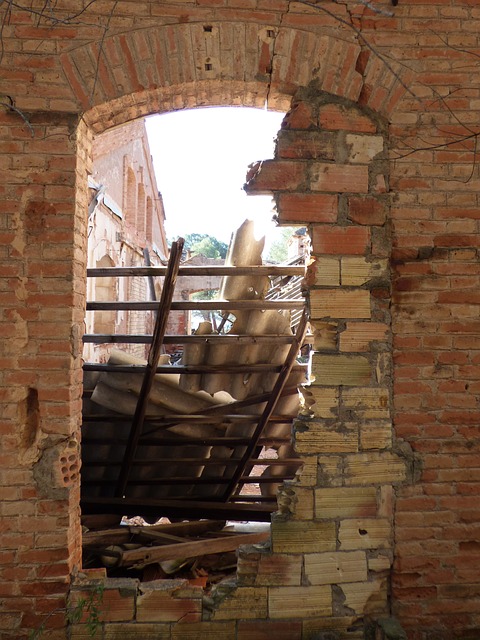In Austin's climate, characterized by intense sunlight, temperature fluctuations, and occasional storms, leaks frequently occur at chimneys and vents due to compromised materials like sealants and flashing. To prevent water damage and maintain structural integrity, homeowners should conduct regular maintenance focusing on the base of chimneys where eroded mortar and failing flashing are common issues, as well as plumbing and dryer vents which are also frequent leak points. Prompt repair involving the removal of damaged sealant, cleaning of surfaces, and application of durable weather-resistant sealant using a caulking gun is necessary for effective protection. Utilizing specialized roof repair sealants and combining them with Austin roof repair flashing—employing both metal flashing and adhesive or roofing nails for added security—is crucial to endure the local weather conditions. Adhering to safety protocols and following local building codes ensures successful repairs to protect your home from potential water damage in Austin's unique environment.
Addressing leaks promptly is key to maintaining a dry and secure home, particularly in Austin’s diverse weather conditions. This article focuses on effective strategies for sealant breaches around chimneys and vents, common culprits of water intrusion. We’ll explore the prevalent leakage points, their causes, and provide a detailed step-by-step guide for Austin roof repair, ensuring your home remains protected from the elements. Stay dry and informed with our practical advice tailored to the specific challenges faced by Austin residents.
- Identifying Common Areas for Leaks Around Chimneys and Vents in Austin Roofs
- Step-by-Step Guide to Repairing Leaks at Chimney and Vent Penetrations in Your Austin Home
Identifying Common Areas for Leaks Around Chimneys and Vents in Austin Roofs

When addressing leaks within Austin’s unique climate, it’s crucial to identify common areas where such issues typically manifest around chimneys and vents. These vulnerable points can often be traced back to the roof’s penetrations, which are prone to wear and tear over time. The combination of intense sunlight, varying temperatures, and occasional storms in Austin can cause materials like sealants and flashing to deteriorate or shift, leading to gaps where water can infiltrate. Homeowners and professionals conducting Austin roof repair should pay close attention to the following:
Firstly, the base of the chimney is a common culprit for leaks due to its direct exposure to the elements. Over time, mortar can crack or erode, compromising the integrity of the seal between the chimney and the roof. Additionally, improperly installed flashing—the metal material that directs water around the chimney—can also fail, allowing water to enter the home. It’s essential for those engaged in Austin roof repair to inspect the condition of both the mortar and the flashing at the chimney base to prevent such leaks.
Vents are another frequent source of water intrusion. These can include plumbing vents, dryer vents, and any other protrusions through the roof deck. Similar to chimneys, these areas require a robust seal and proper flashing to prevent leaks. During an Austin roof repair service, it’s important to ensure that all vent penetrations are sealed with a resilient material designed to withstand the local climate conditions. Regular maintenance and timely repairs can significantly reduce the risk of water damage from leaky vents, saving homeowners from costly repairs down the line. Identifying these common areas for leaks and addressing them with skilled Austin roof repair services is key to maintaining a dry and secure home environment.
Step-by-Step Guide to Repairing Leaks at Chimney and Vent Penetrations in Your Austin Home

When confronted with leaks at chimney and vent penetrations in your Austin home, addressing the issue promptly is crucial to prevent water damage and maintain structural integrity. Start by safely accessing your roof, ensuring you have all necessary safety equipment and tools. Inspect the areas around the chimney and vents for any signs of wear, such as cracked caulk or missing flashing. These are common entry points for water intrusion.
To begin the repair process, carefully remove any old, damaged sealant with a putty knife or a similar tool. Clean the surfaces thoroughly to ensure a proper bond for new materials. Next, apply a high-quality, weather-resistant sealant around the base of the chimney and vents. Make sure to smooth out the sealant with a caulking gun, creating a uniform bead that adheres well to both the roof and the penetration points. In Austin’s variable climate, where extreme temperatures and weather events can challenge even the most robust roof systems, using a sealant specifically designed for roof repair will provide the best protection against future leaks. For added durability, consider overlapping the sealant with metal flashing, known locally as Austin roof repair flashing, which can be affixed with roofing nails or adhesive and then sealed over with more caulk. This step-by-step guide to repairing leaks at chimney and vent penetrations will help you effectively safeguard your home against the elements and avoid costly repairs down the line. Always remember to follow safety protocols and local building codes during your roof work for the best outcomes.
When it comes to maintaining the integrity of your Austin home, addressing leaks around chimneys and vents is crucial. These areas are frequent entry points for water intrusion, which can lead to costly damage if left unchecked. By understanding the common leak sources and following a detailed repair guide, homeowners in Austin can effectively mitigate these issues, safeguarding their properties from the potential havoc of water penetration. For professional assistance with such repairs, turning to reputable Austin roof repair services is advisable, ensuring that your home remains dry and secure. With the right knowledge and resources at hand, keeping your Austin residence protected against the elements has never been more straightforward.
